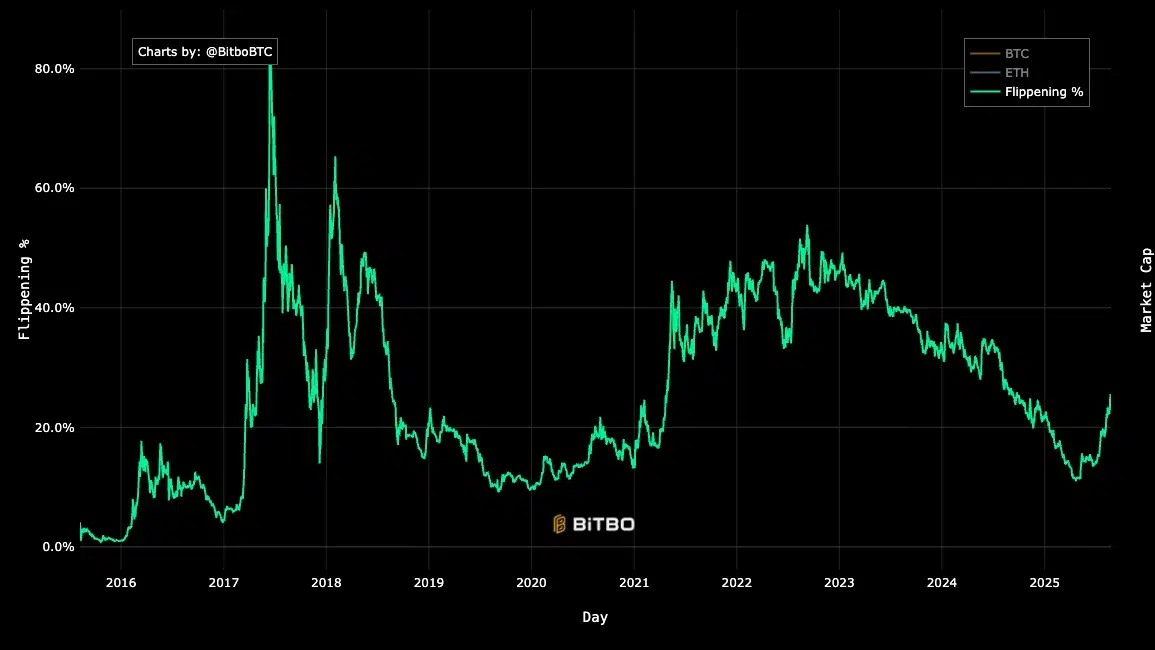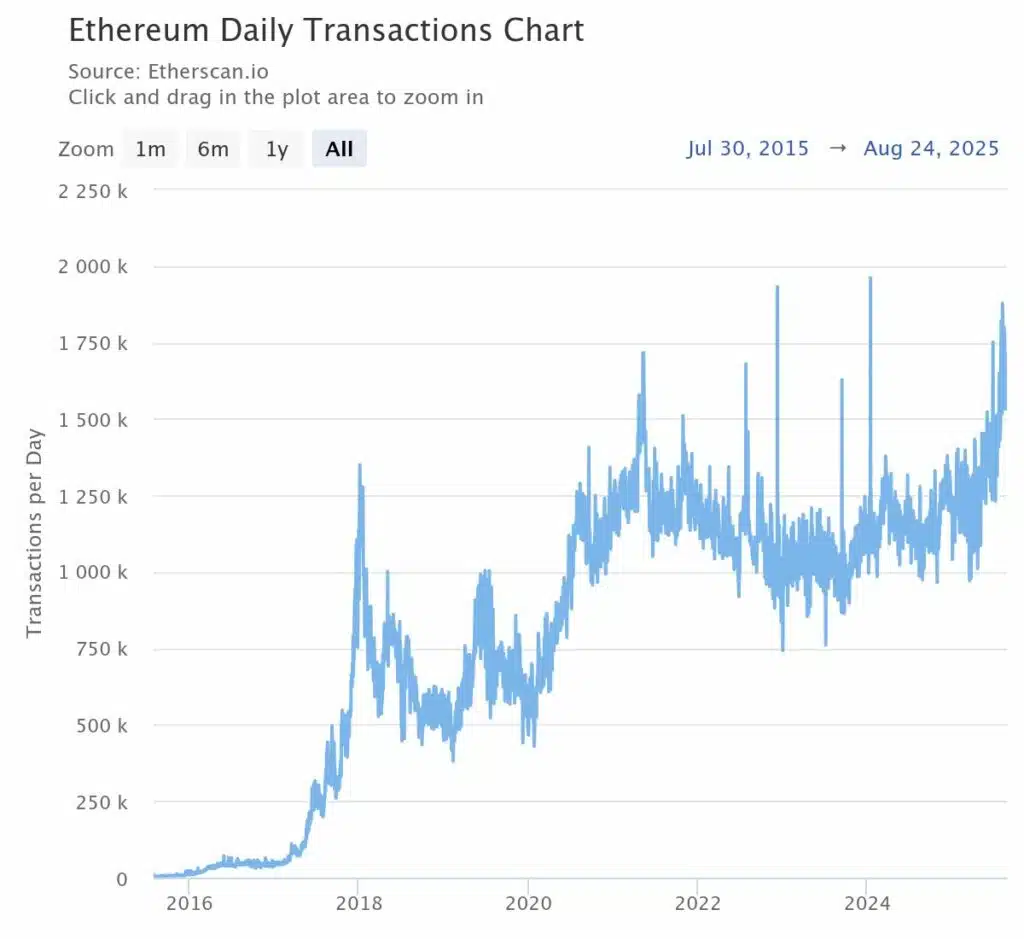The “flippening” is the moment many crypto folks fantasize about. It’s the term for when Ethereum’s total value finally eclipses Bitcoin’s.
For years, Bitcoin has been the undisputed king, but the ground beneath its throne is shaking. A mix of new tech, changing tastes from big investors, and a wild global economy are rewriting the rules. Looking ahead to 2030, the real fight isn’t just about price. It’s about which of these giants will actually shape how we use money online.
At its heart, this is a clash of two completely different ideas. Bitcoin sells a simple, powerful story – It’s “digital gold,” a finite haven safe from inflation and government meddling. Its rigid supply of 21 million coins, guaranteed by code and regular “halvings,” is what hooks investors looking for an asset that can’t be diluted.
Ethereum’s ambition is wilder. It wants to be a “world computer,” a decentralized launchpad for smart contracts and the apps (dApps) they run. Its value comes from what you can do with it – Fueling the sprawling worlds of Decentralized Finance (DeFi), digital collectibles (NFTs), and the push to put real-world assets on the blockchain. Buying ETH is a bet that this whole open-finance experiment actually works.
So, is the flippening really possible?

Source: The Flippening Index/Bitbo charts
A tale of two blockchains!
Look at what’s actually happening on the blockchains, and the story isn’t even close. Ethereum’s network is a bustling city. Bitcoin’s is more like a fortified vault. In a hypothetical first half of 2025, Ethereum might handle 1.74 billion transactions to Bitcoin’s 398 million.
Once you add in its Layer 2 sidechains, Ethereum’s daily transaction count could soar to 9.6 million, leaving Bitcoin’s 1.25 million in the dust.


Source: Etherscan
Why the gap? Because people are building things on Ethereum. The value locked up in its Layer 2 networks alone has rocketed past $42 billion, with hubs like Arbitrum, Base, and Optimism handling the bulk of the traffic. All that activity requires ETH for “gas” fees, making the coin an essential commodity, not just a collectible.
Race to get faster…
Both giants are too slow for the real world, and they know it. Ethereum’s fix is all about “Layer 2s”- Think of them as express lanes built on top of the main highway. Solutions like Arbitrum and Optimism already let people transact faster and cheaper by huge margins.
Bitcoin is trying to catch up. It has the Lightning Network for quick, small payments and projects like Stacks that bolt smart contracts onto its rigid frame. These are getting better, but for now, Ethereum’s superhighway system is far more advanced and handles way more economic traffic.
Wall Street’s game plan and a shaky world
Wall Street’s arrival, thanks to ETFs, poured gasoline on the fire. However, the big money is betting on them for totally different reasons. Bitcoin is seen as the doomsday hedge, while Ethereum is the high-growth tech stock of tomorrow.
You can see this in the money flows. In mid-2025, we saw massive spikes in demand for Ethereum ETFs, sometimes even outdoing Bitcoin’s. It’s a clear signal that institutions are waking up to ETH’s utility and the income it can generate from staking.
The wider world economy just makes the split clearer –
- Inflation – When prices soar, Bitcoin’s hard cap of 21 million coins looks like a safe harbor. Ethereum’s “ultrasound money” idea is more active; high network use burns ETH, potentially shrinking its supply and making it deflationary.
- Chaos – Global crises tend to highlight Bitcoin’s role as a stateless asset for people fleeing unstable regimes. Ethereum, on the other hand, offers a blueprint for a whole new financial system with DeFi.
Going green and playing by the rules
Ethereum did something huge in 2022 – It went green! Its switch to Proof-of-Stake (PoS) slashed its energy use by an estimated 99.95% overnight. That move erased a major ethical objection and made ETH an easy sell for big funds with climate mandates.
Meanwhile, the Wild West days are ending. Places like Europe are rolling out actual rulebooks for crypto, and even the U.S is inching toward clarity. The more predictable the regulations become, the more comfortable large institutions will be with investing in both.
The next gold rush might be tokenizing everything – Stocks, bonds, real estate. Some say this market for Real-World Assets (RWAs) could be worth $30 trillion by 2030.
Right now, Ethereum is the undisputed king of this new territory, hosting most of the $24 billion already tokenized. It’s got the tools, the standards, and a massive head start, though Bitcoin-based projects are gearing up to fight for a piece of the pie.
What is the verdict for 2030?
So, will the flip actually happen by 2030? While a full takeover is far from guaranteed, Ethereum is already crushing Bitcoin in crucial areas like transaction counts and developer buzz.
For Ethereum to take the crown, its universe of apps needs to keep exploding. It has to grow beyond a niche and become the internet’s essential financial layer, powered by its fast and cheap Layer 2s, and capture the lion’s share of the tokenized-asset economy.
However, never bet against Bitcoin. Its story is simple, unbreakable, and powerful. It’s the original, the most secure, and the ultimate digital fortress in a chaotic world.
Many experts, like ARK Invest’s Cathie Wood, see both assets reaching sky-high valuations, with some models even calling for a $1 million Bitcoin.
Whether Ethereum can close the gap comes down to one thing – Can it turn its incredible utility into a monetary value so compelling that it finally dethrones the king? The race is between a digital fortress and a digital city. By 2030, we’ll know which one the world decided to build its future in.
